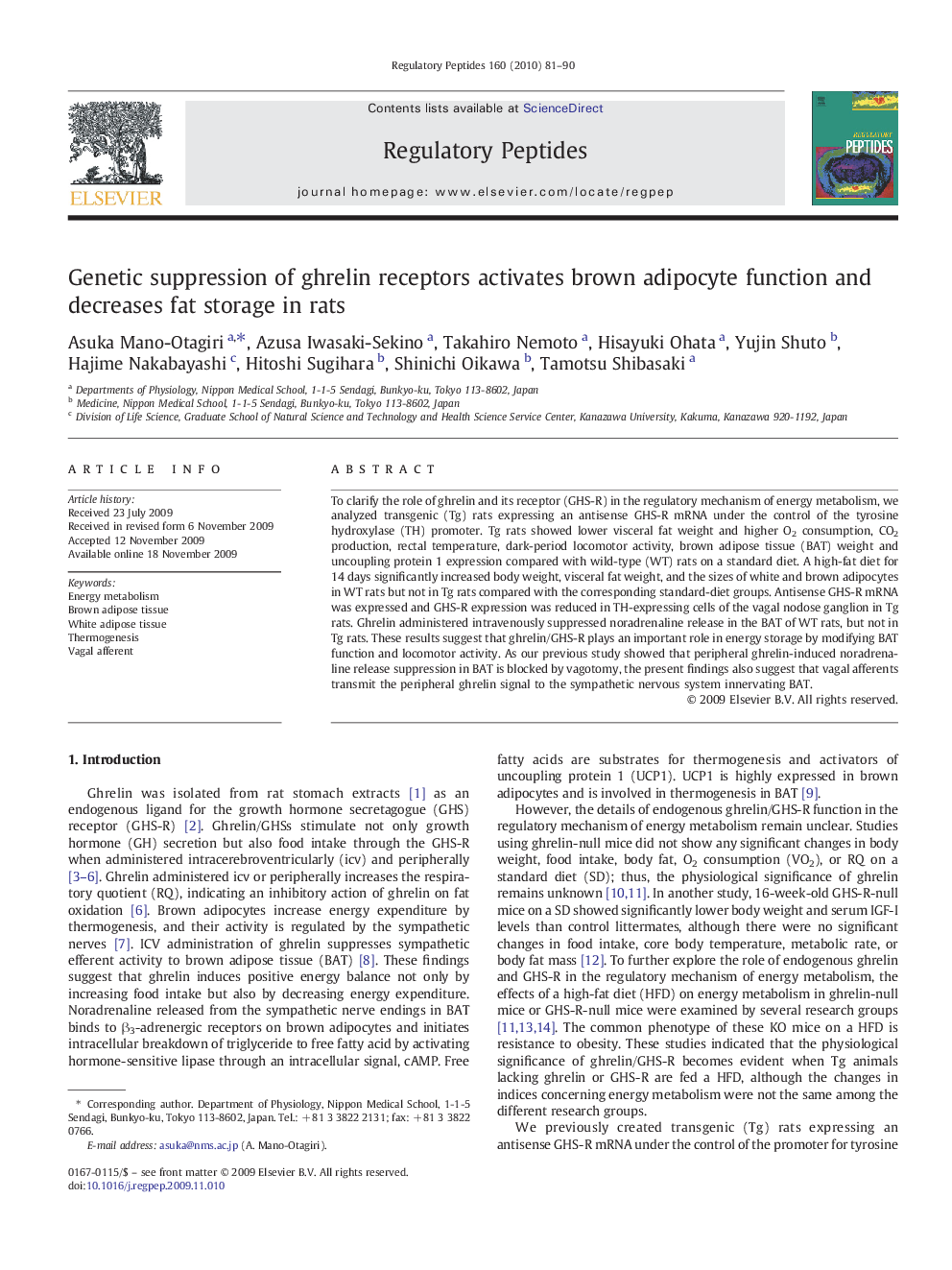| Article ID | Journal | Published Year | Pages | File Type |
|---|---|---|---|---|
| 2022881 | Regulatory Peptides | 2010 | 10 Pages |
To clarify the role of ghrelin and its receptor (GHS-R) in the regulatory mechanism of energy metabolism, we analyzed transgenic (Tg) rats expressing an antisense GHS-R mRNA under the control of the tyrosine hydroxylase (TH) promoter. Tg rats showed lower visceral fat weight and higher O2 consumption, CO2 production, rectal temperature, dark-period locomotor activity, brown adipose tissue (BAT) weight and uncoupling protein 1 expression compared with wild-type (WT) rats on a standard diet. A high-fat diet for 14 days significantly increased body weight, visceral fat weight, and the sizes of white and brown adipocytes in WT rats but not in Tg rats compared with the corresponding standard-diet groups. Antisense GHS-R mRNA was expressed and GHS-R expression was reduced in TH-expressing cells of the vagal nodose ganglion in Tg rats. Ghrelin administered intravenously suppressed noradrenaline release in the BAT of WT rats, but not in Tg rats. These results suggest that ghrelin/GHS-R plays an important role in energy storage by modifying BAT function and locomotor activity. As our previous study showed that peripheral ghrelin-induced noradrenaline release suppression in BAT is blocked by vagotomy, the present findings also suggest that vagal afferents transmit the peripheral ghrelin signal to the sympathetic nervous system innervating BAT.
